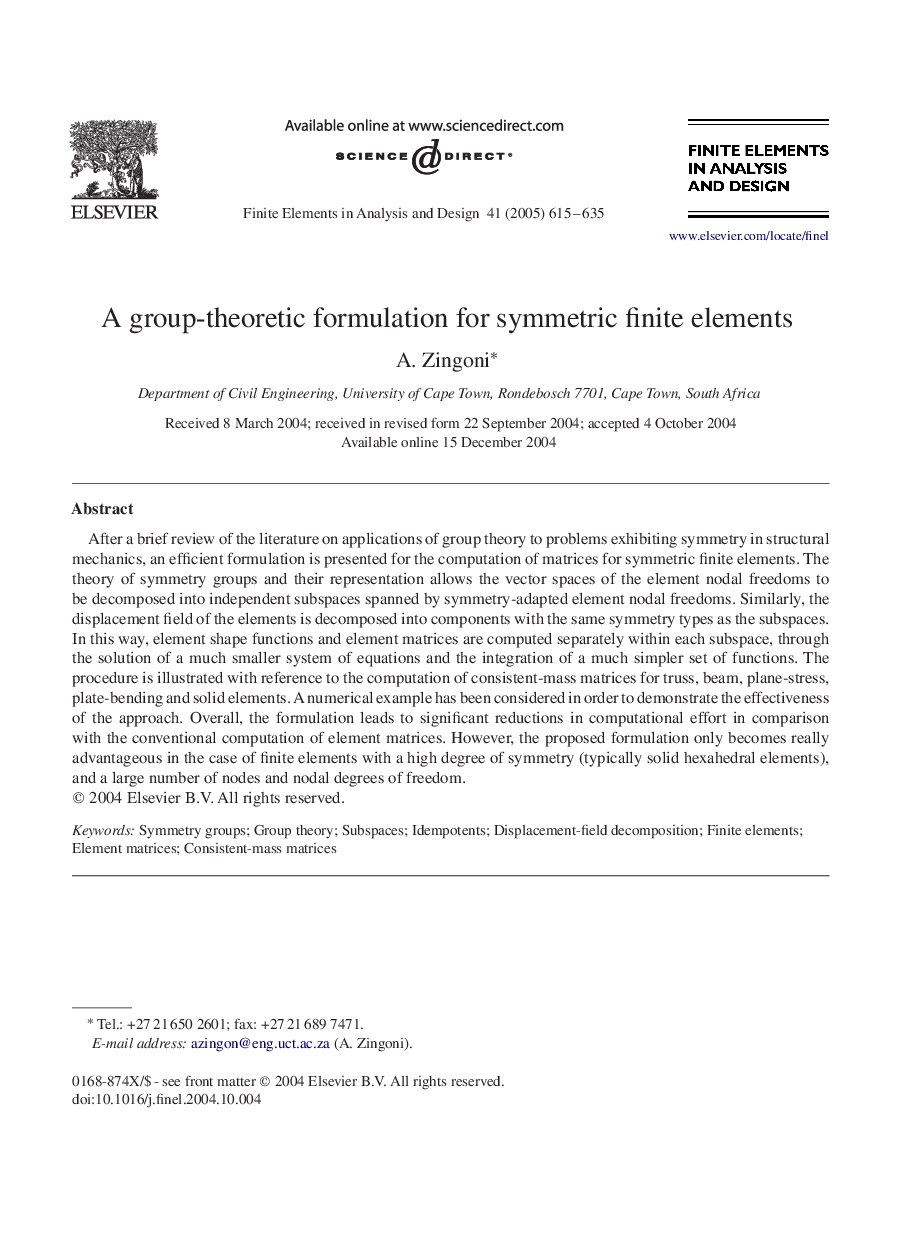| Article ID | Journal | Published Year | Pages | File Type |
|---|---|---|---|---|
| 10354815 | Finite Elements in Analysis and Design | 2005 | 21 Pages |
Abstract
After a brief review of the literature on applications of group theory to problems exhibiting symmetry in structural mechanics, an efficient formulation is presented for the computation of matrices for symmetric finite elements. The theory of symmetry groups and their representation allows the vector spaces of the element nodal freedoms to be decomposed into independent subspaces spanned by symmetry-adapted element nodal freedoms. Similarly, the displacement field of the elements is decomposed into components with the same symmetry types as the subspaces. In this way, element shape functions and element matrices are computed separately within each subspace, through the solution of a much smaller system of equations and the integration of a much simpler set of functions. The procedure is illustrated with reference to the computation of consistent-mass matrices for truss, beam, plane-stress, plate-bending and solid elements. A numerical example has been considered in order to demonstrate the effectiveness of the approach. Overall, the formulation leads to significant reductions in computational effort in comparison with the conventional computation of element matrices. However, the proposed formulation only becomes really advantageous in the case of finite elements with a high degree of symmetry (typically solid hexahedral elements), and a large number of nodes and nodal degrees of freedom.
Related Topics
Physical Sciences and Engineering
Computer Science
Computer Science Applications
Authors
A. Zingoni,
